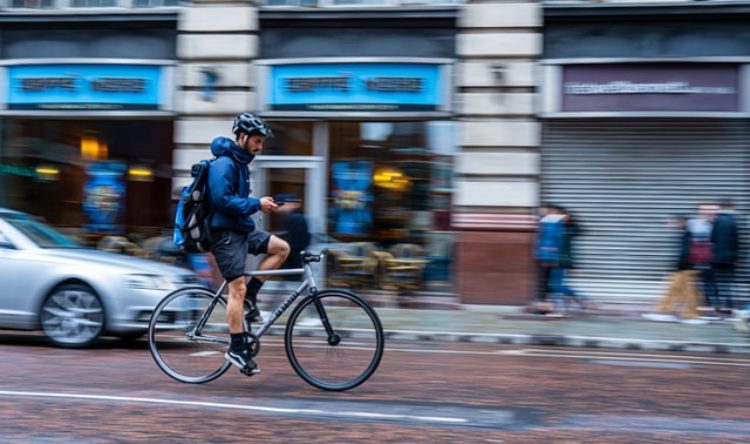Cycling collision cities
The UK hotspots for cycling incidents
London, Bristol and Hull named the most dangerous GB cities for cyclists
Analysis of Road Traffic Accident data highlights the areas and roads that have seen the highest number of accidents involving cyclists
- According to the latest data requested from the Department for Transport, there were 16,455 reported casualties involving pedal cyclists across Great Britain in 2020.
- The figures show there were record numbers of cycling deaths in 2020, with 140, accounting for 10% of all road fatalities and the highest single year figure across the last 10 years.
- The areas with the most reported accidents involving cyclists were Surrey (493), followed by Hampshire (376) and Westminster (348).
- The A3211 between London Blackfriars and Embankment was named as the most common location of serious cycling accidents in the Capital.
- Further information on the roads with the most cycling accidents per area can be found here.
Capital offence
London has been named as the most dangerous city for the country’s cyclists, according to a new study from personal injury experts Boyes Turner Claims.
The research analyses the latest available Department for Transport data across the last 10 years. It shows that there were 16,230 casualties involving Pedal Cyclists across Great Britain in 2020, accounting for 14% of all RTA casualties on GB roads.
According to CrashMap, which uses Dft data to highlight the areas which the highest number of cycling collisions, London is the most dangerous city in the UK for cyclists, with 11,560 accidents including cyclists occurring in the last five years.
The A3211 between London Blackfriars and Embankment is shown to be the location with the highest number of serious accidents. Those cycling around Temple Tube Station should take extra care, with more common cycling fatalities occurring here than any other area of London.
| Location | No of Accidents involving Cyclists (2016-) | Most Common Location of Fatal Accidents | Most Common Location of Serious Accidents |
| London | 11,560 | Near Temple Tube Station | A3211 between London Blackfriars and Embankment |
| Bristol | 1301 | B4051, Montpelier | A4018 |
| Hull | 1243 | A615 | Holderness Road / A1079 |
| Manchester | 1121 | A6042 Ring Road nr Blackfriars | A56 by Old Trafford |
| Portsmouth | 1021 | A2030 | A2047 |
| Leeds | 996 | Kirkstall Road | Headingley Lane nr Victoria Road |
| Birmingham | 955 | Alum Rock Road | Bath Row |
| Liverpool | 853 | Fincham nr Princess Drive | B5171 Roundabout, Gateacre |
| Cambridge | 764 | Newmarket Road | A1134 Roundabout to Chesterton Rd / Mill Road |
| Oxford | 717 | Botley Road | Ifley Road / B480 |
| Edinburgh | 689 | Princes St | Princes St / A700 |
| Brighton & Hove | 616 | N/A | Dyke Road / London Road |
| Glasgow | 494 | A77 nr Calder St | B808 |
| Norwich | 399 | Aylesham Road | A11 |
| Cardiff | 366 | Colchester Avenue | A4161 |
| Preston | 319 | A583, Ashton-on-Ribble | Ribbleton Road |
| Leicester | 317 | Upperton Road | A607 |
| Peterborough | 317 | Bourges Blvd | A515 / London Road |
| York | 304 | A1036 / Stockton Ln | A59 / Blossom Street |
| Plymouth | 288 | A386 – Outland Road | Martin St Roundabout |
Around the country
Outside of London, Bristol is the most dangerous city for cyclists, with 1,301 accidents involving cyclists since 2016, and the A4018 shown as the most common location of serious accidents.
Hull cyclists have been involved in 1,243 accidents since 2016, with Holderness Road named as the most common area for serious cycling accidents in the city.
Cycling go slow
Analysis of the DfT data shows that overall, RTA casualties have decreased by 45% over the past 10 years from 208,648 a year to 115,333 since 2010. However, the decrease in casualties involving cyclists has slowed at a much slower rate, down from 17,185 to 16,230 per year, representing only a 6% drop over the previous decade.
Even considering the reduced number of motorists and cyclists on roads during periods of 2020 (due to the national lockdowns), there were more cycling deaths and serious injuries last year, than in 2019. It seems that 2020 went against the downward trend shown over the previous years, with a 40% rise in cycling deaths across Great Britain between 2019 and 2020 (up from 100 to 140 deaths per year), while there was a 3% rise in serious injuries including cyclists between 2019 and 2020, (3,695 to 3,824 serious injuries per year).
Cycling casualties are also making up a much larger percentage of overall RTA casualties than they did 10 years ago. In 2010, the number of RTA casualties involving cyclists represented 8% of the total number, however this grew to 14% in 2020. The latest figures show there were record numbers of cycling deaths in 2020, with 140 deaths involving cyclists, accounting for 10% of all road fatalities and the highest single year figure across the last 10 years.
Casualty increase
The Dft data also highlights that there were even more cycling crashes reported last year, even if an injury was not sustained by the cyclist that was classed as a casualty. According to further data requested from the DfT in October 2021, there were a total of 16,455 reported accidents involving pedal cyclists across Great Britain in 2020.4
The areas with the most reported crashes, even if a casualty wasn’t reported, involving cyclists were Surrey (493), followed by Hampshire (376) and Westminster (348). The safest area for cyclists was names as Comhairle nan Eilean Siar, with only one reported cycling accident in 2020.
Vulnerable wheels
“Cyclists are some of the most vulnerable road users, with the weather, road and traffic conditions, their smaller size relative to other vehicles, and the awareness and attitude of other drivers around them can all reduce their visibility and safety.
Kim Milan, is a Senior Partner of the Personal Injury team at Boyes Turner.
“While it is heartening to see that the Department for Transport data shows the country has seen an overall reduction in casualties caused from RTAs over the past 10 years, the increase in the percentage of all accidents involving cyclists highlights there is still an increasing danger for cyclists on British roads.
“The recent rise in casualty figures between 2019 and 2020 could indicate that if the people who took up cycling last year continue to use their bicycles, the number of accidents could continue to rise.
“While it is helpful to see the areas and roads in the country where cyclists should take extra care, it is imperative for all road users to be mindful of other roads users at all times, to reduce the risk of suffering a serious injury from a road accident, collision or fall.”
Further information about the findings can be found here.







